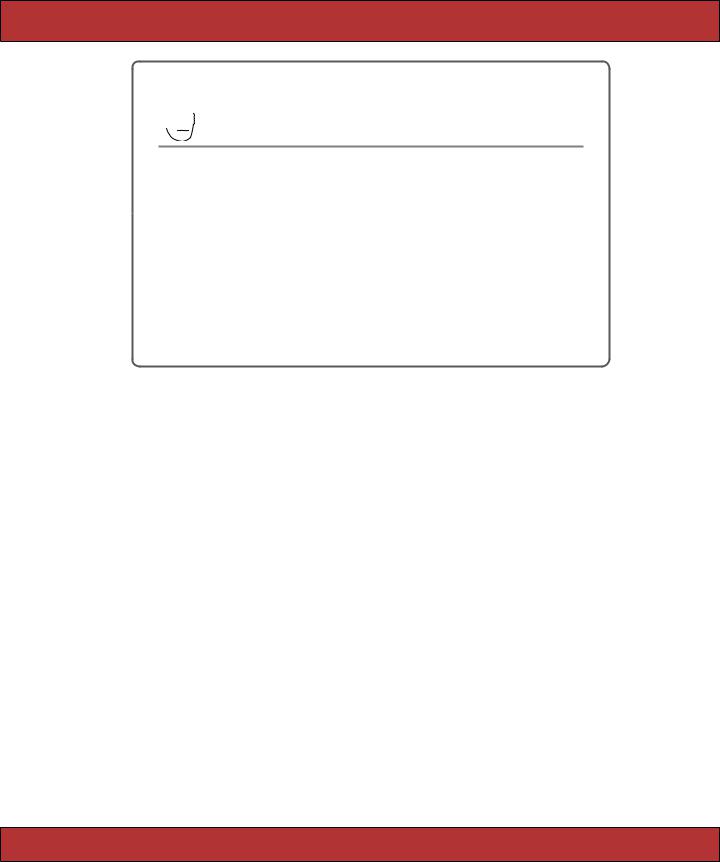
- •Contents
- •Preface to the Second Edition
- •Introduction
- •Rails Is Agile
- •Finding Your Way Around
- •Acknowledgments
- •Getting Started
- •The Architecture of Rails Applications
- •Models, Views, and Controllers
- •Active Record: Rails Model Support
- •Action Pack: The View and Controller
- •Installing Rails
- •Your Shopping List
- •Installing on Windows
- •Installing on Mac OS X
- •Installing on Linux
- •Development Environments
- •Rails and Databases
- •Rails and ISPs
- •Creating a New Application
- •Hello, Rails!
- •Linking Pages Together
- •What We Just Did
- •Building an Application
- •The Depot Application
- •Incremental Development
- •What Depot Does
- •Task A: Product Maintenance
- •Iteration A1: Get Something Running
- •Iteration A2: Add a Missing Column
- •Iteration A3: Validate!
- •Iteration A4: Prettier Listings
- •Task B: Catalog Display
- •Iteration B1: Create the Catalog Listing
- •Iteration B4: Linking to the Cart
- •Task C: Cart Creation
- •Sessions
- •Iteration C1: Creating a Cart
- •Iteration C2: A Smarter Cart
- •Iteration C3: Handling Errors
- •Iteration C4: Finishing the Cart
- •Task D: Add a Dash of AJAX
- •Iteration D1: Moving the Cart
- •Iteration D3: Highlighting Changes
- •Iteration D4: Hide an Empty Cart
- •Iteration D5: Degrading If Javascript Is Disabled
- •What We Just Did
- •Task E: Check Out!
- •Iteration E1: Capturing an Order
- •Task F: Administration
- •Iteration F1: Adding Users
- •Iteration F2: Logging In
- •Iteration F3: Limiting Access
- •Iteration F4: A Sidebar, More Administration
- •Task G: One Last Wafer-Thin Change
- •Generating the XML Feed
- •Finishing Up
- •Task T: Testing
- •Tests Baked Right In
- •Unit Testing of Models
- •Functional Testing of Controllers
- •Integration Testing of Applications
- •Performance Testing
- •Using Mock Objects
- •The Rails Framework
- •Rails in Depth
- •Directory Structure
- •Naming Conventions
- •Logging in Rails
- •Debugging Hints
- •Active Support
- •Generally Available Extensions
- •Enumerations and Arrays
- •String Extensions
- •Extensions to Numbers
- •Time and Date Extensions
- •An Extension to Ruby Symbols
- •with_options
- •Unicode Support
- •Migrations
- •Creating and Running Migrations
- •Anatomy of a Migration
- •Managing Tables
- •Data Migrations
- •Advanced Migrations
- •When Migrations Go Bad
- •Schema Manipulation Outside Migrations
- •Managing Migrations
- •Tables and Classes
- •Columns and Attributes
- •Primary Keys and IDs
- •Connecting to the Database
- •Aggregation and Structured Data
- •Miscellany
- •Creating Foreign Keys
- •Specifying Relationships in Models
- •belongs_to and has_xxx Declarations
- •Joining to Multiple Tables
- •Acts As
- •When Things Get Saved
- •Preloading Child Rows
- •Counters
- •Validation
- •Callbacks
- •Advanced Attributes
- •Transactions
- •Action Controller: Routing and URLs
- •The Basics
- •Routing Requests
- •Action Controller and Rails
- •Action Methods
- •Cookies and Sessions
- •Caching, Part One
- •The Problem with GET Requests
- •Action View
- •Templates
- •Using Helpers
- •How Forms Work
- •Forms That Wrap Model Objects
- •Custom Form Builders
- •Working with Nonmodel Fields
- •Uploading Files to Rails Applications
- •Layouts and Components
- •Caching, Part Two
- •Adding New Templating Systems
- •Prototype
- •Script.aculo.us
- •RJS Templates
- •Conclusion
- •Action Mailer
- •Web Services on Rails
- •Dispatching Modes
- •Using Alternate Dispatching
- •Method Invocation Interception
- •Testing Web Services
- •Protocol Clients
- •Secure and Deploy Your Application
- •Securing Your Rails Application
- •SQL Injection
- •Creating Records Directly from Form Parameters
- •Avoid Session Fixation Attacks
- •File Uploads
- •Use SSL to Transmit Sensitive Information
- •Knowing That It Works
- •Deployment and Production
- •Starting Early
- •How a Production Server Works
- •Repeatable Deployments with Capistrano
- •Setting Up a Deployment Environment
- •Checking Up on a Deployed Application
- •Production Application Chores
- •Moving On to Launch and Beyond
- •Appendices
- •Introduction to Ruby
- •Classes
- •Source Code
- •Resources
- •Index
- •Symbols

NAMING CONVENTIONS  240
240
Configuration Parameters
You configure Rails by setting various options in the Rails modules. Typically you’ll make these settings either at the end of environment.rb (if you want the setting to apply in all environments) or in one of the environment-specific files in the environments directory.
We provide a listing of all these configuration parameters in Appendix B, on page 644.
14.4Naming Conventions
Newcomers to Rails are sometimes puzzled by the way it automatically handles the naming of things. They’re surprised that they call a model class Person and Rails somehow knows to go looking for a database table called people. This section is intended to document how this implicit naming works.
The rules here are the default conventions used by Rails. You can override all of these conventions using the appropriate declarations in your Rails classes.
Mixed Case, Underscores, and Plurals
We often name variables and classes using short phrases. In Ruby, the convention is to have variable names where the letters are all lowercase and words are separated by underscores. Classes and modules are named differently: there are no underscores, and each word in the phrase (including the first) is capitalized. (We’ll call this mixed case, for fairly obvious reasons.) These conventions lead to variable names such as order_status and class names such as
LineItem.
Rails takes this convention and extends it in two ways. First, it assumes that database table names, like variable names, have lowercase letters and underscores between the words. Rails also assumes that table names are always plural. This leads to table names such as orders and third_parties.
On another axis, Rails assumes that files are named in lowercase with underscores.
Rails uses this knowledge of naming conventions to convert names automatically. For example, your application might contain a model class that handles line items. You’d define the class using the Ruby naming convention, calling it LineItem. From this name, Rails would automatically deduce the following.
•That the corresponding database table will be called line_items. That’s the class name, converted to lowercase, with underscores between the words and pluralized.
•Rails would also know to look for the class definition in a file called line_item.rb (in the app/models directory).
Report erratum

NAMING CONVENTIONS  241
241
Model Naming
Table |
line_items |
File |
app/models/line_item.rb |
Class |
LineItem |
|
|
Controller Naming
URL http://.../store/list
File app/controllers/store_controller.rb
Class StoreController
Method list
Layout app/views/layouts/store.rhtml
View Naming
URL |
https://.../store/list |
File |
app/views/store/list.rhtml (or .rxml, .rjs) |
Helper |
module StoreHelper |
File |
app/helpers/store_helper.rb |
Figure 14.3: Naming Convention Summary
Rails controllers have additional naming conventions. If our application has a store controller, then the following happens.
•Rails assumes the class is called StoreController and that it’s in a file named store_controller.rb in the app/controllers directory.
•It also assumes there’s a helper module named StoreHelper in the file store_helper.rb located in the app/helpers directory.
•It will look for view templates for this controller in the app/views/store directory.
•It will by default take the output of these views and wrap them in the layout template contained in the file store.rhtml or store.rxml in the directory app/views/layouts.
All these conventions are shown in Figure 14.3.
Report erratum

NAMING CONVENTIONS  242
242


 David Says. . .
David Says. . .
Why Plurals for Tables?
Because it sounds good in conversation. Really. “Select a Product from products.” Just like “Order has_many :line_items.”
The intent is to bridge programming and conversation by creating a domain language that can be shared by both. Having such a language means cutting down on the mental translation that otherwise confuses the discussion of a product description with the client when it’s really implemented as merchandise body. These communications gaps are bound to lead to errors.
Rails sweetens the deal by giving you most of the configuration for free if you follow the standard conventions. Developers are thus rewarded for doing the right thing, so it’s less about giving up “your ways” and more about getting productivity for free.
There’s one extra twist. In normal Ruby code you have to use the require keyword to include Ruby source files before you reference the classes and modules in those files. Because Rails knows the relationship between filenames and class names, require is normally not necessary in a Rails application. Instead, the first time you reference a class or module that isn’t known, Rails uses the naming conventions to convert the class name to a filename and tries to load that file behind the scenes. The net effect is that you can typically reference (say) the name of a model class, and that model will be automatically loaded into your application.
We said that require is not normally needed. You will have to use it to load in Ruby source that Rails doesn’t explicitly manage. In particular, if you have code in the lib directory or one of its subdirectories, you’ll need to load it using require.
require "my_library"
require "pdf/invoice_writer"
Grouping Controllers into Modules
So far, all our controllers have lived in the app/controllers directory. It is sometimes convenient to add more structure to this arrangement. For example, our store might end up with a number of controllers performing related but disjoint administration functions. Rather than pollute the top-level namespace, we might choose to group them into a single admin namespace.
Report erratum

LOGGING IN RAILS  243
243
Rails does this using a simple naming convention. If an incoming request has a controller named (say) admin/book, Rails will look for the controller called book_controller in the directory app/controllers/admin. That is, the final part of the controller name will always resolve to a file called name_controller.rb, and any leading path information will be used to navigate through subdirectories, starting in the app/controllers directory.
Imagine that our program has two such groups of controllers (say, admin/xxx and content/xxx) and that both groups define a book controller. There’d be a file called book_controller.rb in both the admin and content subdirectories of app/controllers. Both of these controller files would define a class named BookController. If Rails took no further steps, these two classes would clash.
To deal with this, Rails assumes that controllers in subdirectories of the directory app/controllers are in Ruby modules named after the subdirectory. Thus, the book controller in the admin subdirectory would be declared as
class Admin::BookController < ApplicationController
# ...
end
The book controller in the content subdirectory would be in the Content module.
class Content::BookController < ApplicationController
# ...
end
The two controllers are therefore kept separate inside your application.
The templates for these controllers appear in subdirectories of app/views. Thus, the view template corresponding to the request
http://my.app/admin/book/edit/1234
will be in the file
app/views/admin/book/edit.rhtml
You’ll be pleased to know that the controller generator understands the concept of controllers in modules and lets you create them with commands such as
myapp> ruby script/generate controller Admin::Book action1 action2 ...
This pattern of controller naming has ramifications when we start generating URLs to link actions together. We’ll talk about this starting on page 407.
14.5Logging in Rails
Rails has logging built right into the framework. Or, to be more accurate, Rails exposes a Logger object to all the code in a Rails application.
Report erratum
